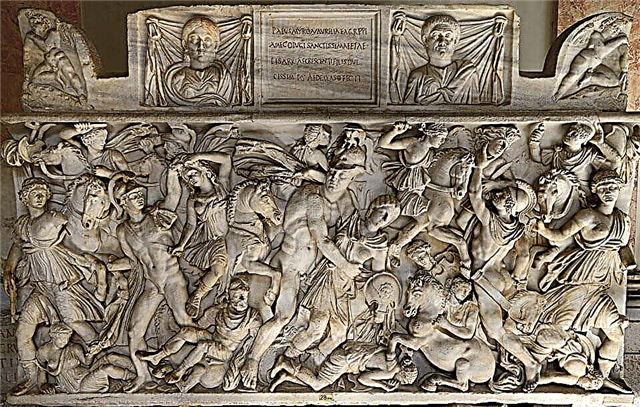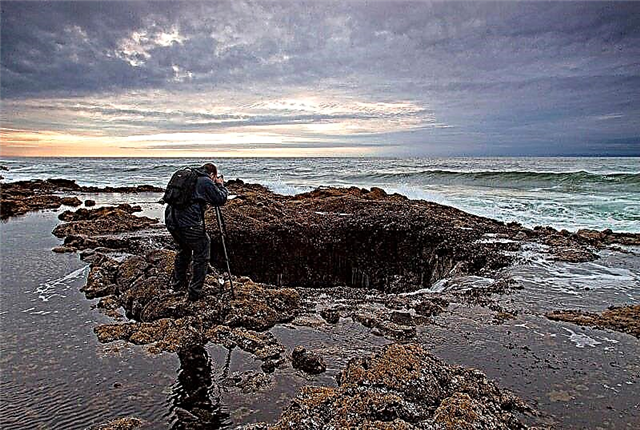A wooden house with a large Russian stove and tiny rooms makes a strong impression. This is the place where Konstantin Eduardovich Tsiolkovsky lived, watched the stars and created models of aircraft. The Kaluga Museum is one of the most visited in the country. Many tourists from Russia and abroad come to it.
Tsiolkovsky in Kaluga
The Tsiolkovskys and their children moved to Kaluga from Borovsk in 1892, when Eduard Konstantinovich was 35 years old. At the end of the 19th century, the county town was quite large, had cobbled streets, about 80 churches and monasteries. There were 50 thousand people living in Kaluga.

View of the K.E. Tsiolkovsky from the street. Cosmonaut Volkov
Tsiolkovsky was appointed teacher of mathematics at the district school. In 1899, he began to additionally teach physics lessons at a women's school attached to the Kaluga diocese. During his life in Kaluga, the scientist wrote dozens of works on astronautics, aeronautics, aeronautics and rocket dynamics, as well as philosophical works on the ideal society of the future.
Tsiolkovsky's wife was an economical housewife, so they had little savings. This money and teaching wages were spent entirely on the family's day-to-day life, book publishing and research. Some scientific papers were published with money collected by subscription.

View of the K.E. Tsiolkovsky from st. Tsiolkovsky
In Kaluga, the Tsiolkovskys had another son and daughter. However, the parents had to endure many tragedies. Five out of seven children died during the life of Konstantin Eduardovich. The family lived very modestly and changed addresses several times, moving from apartment to apartment.
In 1904, Tsiolkovsky bought a house on the outskirts of the city, on Korovinskaya Street. A wooden one-story building with one living room stood 350 meters from the Oka. In 1908, during a flood, the river overflowed and flooded residential areas of Kaluga. The Tsiolkovskys' housing was also badly damaged by the flood. Unique records with calculations and sketches of articles, machines, models and exhibits made by the scientist perished.

The studio of K.E. Tsiolkovsky
The couple had to urgently look for money and make repairs. At the same time, a second floor was added to the house, on which they equipped a workshop and an office.
Museum history
The Tsiolkovsky family lived in their house for 29 years. In 1919, the scientist was given a pension as a member of the Russian Society of Lovers of Physics, Mathematics and Natural Sciences. A small cash allowance allowed his loved ones not to die of hunger during the difficult years of the Civil War.

Memorial plaque on the front of the building
The founder of Russian cosmonautics died of stomach cancer in the fall of 1935. A year after Tsiolkovsky's death, the first scientific and memorial exposition was opened in his house. The new museum immediately became popular, and schoolchildren, workers, students and scientists began to come here.
When the Great Patriotic War began, some of the exhibits were removed. In mid-October 1941, the attacking Moscow Nazi troops captured Kaluga. In the house of Tsiolkovsky, German soldiers stood up.

Museum courtyard
During the occupation, some photographs, books and interior items were destroyed. By the end of December 1941, Kaluga was released. The house-museum was quickly renovated and opened to visitors.
In 1957, the USSR solemnly celebrated the 100th anniversary of the birth of the scientist. On the occasion of the anniversary date, a new exposition was created in the Kaluga museum, and guests could see the updated interiors, outbuildings, a garden and unique exhibits that belonged to Tsiolkovsky himself and his family members.

Monument to K.E. Tsiolkovsky in the courtyard of the house-museum
Contemporary exposition
Many tourists who travel to the cities of the Golden Ring of Russia visit Kaluga. The Tsiolkovsky House-Museum is included in the program of most excursions around the ancient city. The memorial museum is distinguished by a homely atmosphere and a friendly attitude of the guides. A visit here allows you to learn interesting facts about the Tsiolkovskys and touch the origins of Russian cosmonautics.
The employees of the house-museum put a lot of time and effort into their creation, so visitors get the impression that the old house is inhabited. He looks as if the owner has left for a while and is about to return. Many museum exhibits and pieces of furniture are original. Once they were used by members of the Tsiolkovsky family.

K.E. Tsiolkovsky
It is curious that the inconspicuous gray building is not immediately striking. It is only thanks to the sign at the entrance that you can understand that you are standing in front of the museum of the world-famous cosmonautics theorist. Due to several alterations, the house has an irregular shape and consists of small rooms and a kitchen.
A woodpile and a well are visible in the courtyard. Tourists love to be photographed near the monument to the scientist, which was created by the talented sculptor Mikhail Ivanovich Lastochkin. Nearby there is a panel house brought from the Baikonur cosmodrome by the decision of Sergei Pavlovich Korolev. Nowadays, the administration of the museum is located here.

Instruments belonging to K.E. Tsiolkovsky
During the life of Tsiolkovsky, there was no electricity on the outskirts of Kaluga. The rooms were lit with simple kerosene lamps.
The very first room of the museum was given over to "space" gifts and souvenirs. The Book of Honored Guests contains notes left by Yuri Gagarin, other cosmonauts, famous scientists, artists and politicians.

One of the living rooms
A long corridor leads guests to the rest of the rooms, which recreate the atmosphere of an ordinary house. The family lived extremely modestly. Parents and children did not have separate rooms, so the inner space was fenced off with screens. Tourists are shown a living room with a piano, a bedroom with beds, and a workshop with a corrugator and an old lathe.
Konstantin Eduardovich spent a lot of time on a small unheated veranda and created unusual models of aircraft there. A simple and ascetic study of Tsiolkovsky adjoins the veranda. Inside it only fits a narrow, made-up bed, a bookcase and a wooden desk.

Workshop
From the workshop through a small door you can go to the roof of the building. In the summer, Tsiolkovsky set up his telescope there and at night observed the starry sky. He regularly kept records and dreamed that someday humanity would build rockets and be able to conquer space.
It is interesting to look at several hearing aids that the scientist used. At the age of 9, after suffering from scarlet fever, he almost lost his hearing. Devices that helped Tsiolkovsky to hear, he made with his own hands.

On the veranda workshop of K.E. Tsiolkovsky
Useful information for visitors
The doors of the museum are open to guests on Tuesdays, Thursdays and Fridays from 10:00 to 18:00, on Wednesday from 11:00 to 20:00, and on Saturday and Sunday from 10:00 to 19:00. The day off is Monday. The ticket office stops working half an hour before the museum closes.
A ticket for adults costs 250 rubles, for schoolchildren under 16, students and pensioners - 150 rubles. Preschoolers are admitted to the museum free of charge. No money is taken for amateur photography and video filming.
For an independent examination of the exhibits, it is enough to allocate from half an hour to an hour. For 250 rubles, visitors are offered an audio guide for rent.

K.E.'s room Tsiolkovsky
It is interesting to walk around the museum rooms accompanied by an experienced guide and listen to his story about the Tsiolkovsky family. Since the premises are small, there are no more than 20 people in excursion groups.
If desired, you can order an individual tour of the museum.Excursion service in a group costs 500 rubles per person, and an individual excursion, in which up to 4 people can take part, will cost 3000 rubles.
How to get there

Living room
The museum is located 5 km from the Kaluga train station. It stands at the intersection of Tsiolkovsky and cosmonaut Volkov streets, not far from the Gagarinsky bridge over the Oka river.
This part of Kaluga is easily accessible by taxi or public transport. From the bus station and railway station of the city to the museum there is a trolleybus and minibus number 1. You need to get off at the stop "Park Tsiolkovsky". A convenient option is to take minibus number 29 or 31, get to the stop "School number 6" and walk to the museum in 8-10 minutes.
Attraction rating:











